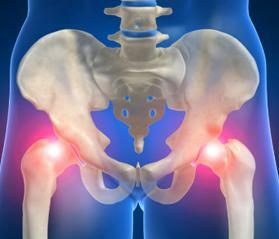 Hip arthrosis( coxarthrosis) is a chronic, progressively progressive disease, in the absence of timely and proper treatment can result in a complete loss of movement in it. The end-of-oz indicates that the predominant is not the inflammatory, but the degenerative process.
Hip arthrosis( coxarthrosis) is a chronic, progressively progressive disease, in the absence of timely and proper treatment can result in a complete loss of movement in it. The end-of-oz indicates that the predominant is not the inflammatory, but the degenerative process.
Symptoms of this disease vary depending on the stage. At the outset, it is a barely noticeable discomfort that occurs when walking and exercising. Perhaps the manifestation in the form of mild pain in the region of the thigh, which passes through at rest. In this case, pain can be felt not only in the hip, but also in the groin or in the knee.
As a rule, coxarthrosis is a process that has been going on for many years, characterized by a gradual change in cartilage with subsequent deformation of bones and loss of joint functionality. Primarily affects people after 40 years, but there are very young patients.
Causes of
Why arthrosis of the hip arises, and what is it? The causes of coxarthrosis may be different, but the picture of the disease is always the same. It all starts with a change in the articular cartilage, which is thinned and loses the property of absorbing the load. Stratification of cartilaginous tissue body compensates for the formation of bone growth along the edge of articular surfaces, which leads to deformation of joints and bones of different degrees.
The main causes of this joint disease:
- Injuries .Such a cause may not be some major damage, but in many cases the development of the disease is affected by chronic micro-traumas, which contribute to the cracking and thinning of the cartilage. They also affect the tearing of the joint capsule, leading to the accumulation of many injuries. Often, repeated microtrauma is the forerunner of the appearance of such a disease.
- Excessive loads of , resulting in systematic microtrauma, as well as joint trauma. Most often it occurs in people engaged in heavy physical labor or professional athletes. In this case, treatment without changing the lifestyle or limiting the workload is also ineffective and often accompanied by relapses.
- Hereditary predisposition of .This can include anomalies in the development of the head of the femur, underdevelopment of the joint elements, etc. In this case, there is a so-called dysplastic arthrosis of the hip joint.
- Diseases .For example, arthritis in the absence of the right treatment can overgrow with arthrosis over time. This is due to the fact that during arthritis the properties of the cartilaginous tissue change, blood circulation is disturbed. Gradually, this leads to the development of a degenerative process.
- Excess body weight .Excess body weight, even when walking, exerts a load on the joints, exceeding their physiological limits of strength.
Depending on the cause of the development of the disease and its pathogenesis, two main types of arthrosis of the hip are identified.
- Primary coxarthrosis of .In this case, the disease develops very slowly and begins with a violation of the blood supply of tissues. The reasons for the development of this type of arthrosis are rooted in a metabolic disorder, which is more common in people over 50 years old. Primary arthrosis of the hip joint is most often diagnosed.
- Secondary coxarthrosis of .In this case, the disease develops against the background of a systemic inflammatory lesion of many joints in the body. Inflammation can be both infectious and autoimmune.
At the initial stage of coxarthrosis of patients, only minor pain or discomfort in the articulation area is concerned. Often such signs are ignored, resulting in the disease progressing.
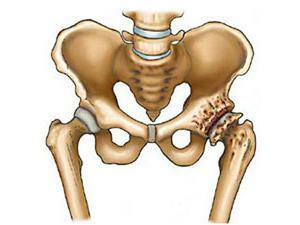
Symptoms of arthrosis of the hip joint
Coxarthrosis of the hip joint, the symptoms of which can not be ignored, can lead to serious consequences. There are several main signs of the disease, which depend on the stage of the disease:
- Pain in the joint area is the most obvious symptom by which one can assume any disease of TBS.The intensity and nature of the sensations usually depends on the stage.
- Limitation of limb mobility is also a symptom of coxarthrosis. For the early stage, the feeling of "stiffness" of the joint, passing after a certain load, is characteristic.
- Weakening of the thigh muscles can be observed already in the second stage of the disease, reaching the third to complete atrophy.
- Changing the leg length due to deformity of the pelvis is characteristic for "neglected" osteoarthritis.
- Lameness or gait change is a very likely sign of bone deformation.
- A distinct crunch in the joint is not always a sign of arthrosis. It is usually taken into account when there are other symptoms.
The main symptom of coxarthrosis is pain, the nature of which, its duration, localization and intensity depend on the stage of the disease.
Osteoarthritis of the hip joint of the 1st degree
For this stage of the disease joints and thighs are common, sometimes in the knee that arise after physical exertion and subsiding after rest. The mobility of the joint is not limited and there are no abnormalities of the gait.
Coxarthrosis of the 1st degree is the initial stage of the disease, after the treatment of which, it is still possible to stop the process of destruction and deformation of the joint and keep its functions in full. But, unfortunately, many do not consider it necessary to consult a doctor because of weak joint pains, and the disease progresses in the meantime.
Arthrosis of the hip joint of the 2nd degree
It appears more vividly - the intensity of pain increases, it arises not only after the load, but also at rest, there is a restriction of motor functions. In particular, coxarthrosis is characterized by difficulty in performing pronation( hip rotation inside) and leads, forming a contracture.
At X-ray examination, we see a narrowing of the articular space and appearance of bone growths on the surfaces. The acetabulum and the femoral head are deformed. Begin to atrophy the muscles of the hip on the side of the lesion, and the pain syndrome extends below, grasping both the knee joint and the inguinal region( it is important to understand that this will not be accompanied by dystrophic changes in the knee joint).
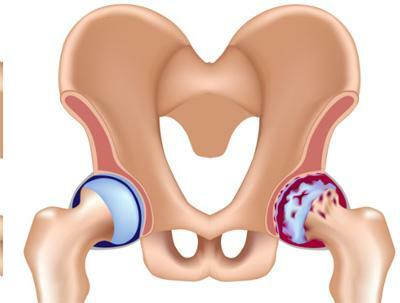
Arthrosis of the hip joint of the third degree
Symptoms of the disease are pronounced and of a permanent nature. Painful syndrome overtakes at night. When walking, the patient uses a support. Muscles of the lower leg and thighs gradually atrophy, and the sick leg of the sick person becomes much shorter.
Often to the 3rd degree, the joint gap completely disappears, and the joints coalesce into a single bone structure, this is demonstrated by a snapshot. As a result, complete immobility of the joint occurs.
The radiographs define extensive bone growths from the side of the acetabular roof and the head of the femur, a sharp narrowing of the joint space. The neck of the femur is considerably widened and shortened.
Diagnosis
Before you figure out how to treat arthrosis of the hip joint, you must correctly diagnose. If coxarthrosis is suspected, the person will be directed to a biochemical blood test - in the presence of the disease, a slight increase in ESR, globulins, immunoglobulins and seromucoid is observed in patients.
The next step in the detection of arthrosis is an X-ray photo. It will reveal:
- ossification of the cartilage,
- bone growths at the border of the cartilage,
- narrowing of the joint spacing,
- bone compaction under the cartilage.
Unfortunately, the X-ray photo does not allow us to see the articular capsule and the cartilage itself, if it is necessary to obtain information about these soft tissues, then the patient will be directed to tomography.
Treatment of arthrosis of the hip joint
With diagnosed arthrosis of the hip joint treatment will directly depend on the stage at which the disease is located. The general scheme of treatment involves the achievement of the following objectives:
- to eliminate pain and discomfort in the area of the affected joint;
- to adjust the intraarticular cartilage nutrition and start the process of its recovery;
- to eliminate intra-articular fluid deficiency;
- activate microcirculation in the tissues of the joint;
- eliminate the increased load on the hip joint;
- strengthen the muscles that surround, protect and support the articulation;
- prevent deformation and increase mobility in the hip joint.
All this can be achieved only through an integrated approach that should include not only drug therapy, but also lifestyle changes in order to get rid of the risk factors for coxarthrosis.
- In the 3 stages of , the treatment involves surgery, during which the joint is replaced with an endoprosthesis, with part of the prosthesis implanted in the femur, and part - in the pelvic bone. The operation is rather complicated, time-consuming and requires a long rehabilitation period.
- When I and II degree arthrosis of the hip joint treatment is performed without surgery. Used: NSAIDs, muscle relaxants, chondroprotectors, vasodilator drugs, hormonal steroid drugs, topical medications - ointments, lotions, compresses.
All these drugs are prescribed exclusively by the doctor in charge. Some of them are effective in the form of injections directly into the affected joint area. Such injections can only be done by qualified medical personnel. Therefore, self-treatment is not strictly recommended.
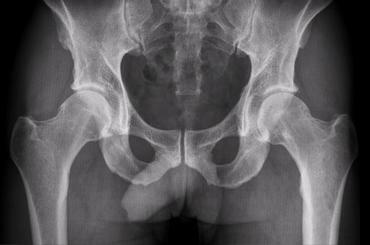
Non-pharmacological methods
In addition to the use of medicines, doctors recommend non-drug methods to combat the disease. These include the following ways of treating this disease:
- physiotherapy;
- massage;
- joint dilution;
- diet.
Physiotherapy for arthrosis includes the following treatments:
- magnetotherapy;
- UHF and ultrasound therapy;
- aerionic and electrotherapy;
- inductothermy;
- phototherapy;
- application of laser technology.
All these methods can be used only to improve blood supply to the joints and to relieve spasms.
Combined treatment of hip arthrosis involves the appointment of the following groups of medicines: - Non-steroidal anti-inflammatory drugs( diclofenac, ketoprofen, indomethocin, brufen, piroxicam, etc., all eliminate pain, relieve inflammation, but do not repair cartilage tissue).
- Chondroprotectors .Preparations for feeding cartilage tissue. Speed up its recovery. Important for the 1,2 phase of treatment of arthrosis. With the third degree of the disease, the cartilage is already destroyed, these medicines will be useless. Take medication for a long time, take several courses.
- Muscle relaxants ( sirdalud, midocalm, etc., they eliminate muscle spasms in the area of joints, promote the improvement of blood supply to tissues).
- Ointments and creams .Therapeutic ointments are ways to alleviate the condition of a sick person, but do not contribute to complete recovery. Well fit warming ointments. They irritate the skin's receptors, and as a result, they reduce the pain syndrome. Warming ointments also work to restore increased circulation in the tissues and muscles around the patient's joint.
- Injections of steroids into the joint cavity ( hydrocotisone, motelpred, kenalog, etc., injections of these drugs are prescribed to relieve the exacerbation of the disease and eliminate severe pain).
- Vasodilators ( trental, cinaresin, theonikol, etc., expand the vessels inside the joint cavity and near it, thereby improving the delivery of nutrients needed for tissue repair).
It is not necessary to rely on the traditional means of treatment. But some healers recommend lemon, garlic or celery root for the treatment of joints and bones.
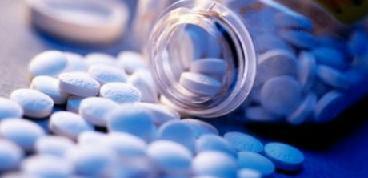
Massage in the treatment of coxarthrosis
With deforming arthrosis of the hip joint, treatment with a massage gives good results. Massage with coxarthrosis is a very effective and useful method. It is desirable that the massage was conducted by a good specialist and as often as possible.
Its action is aimed at improving blood circulation, strengthening the muscles, relieving painful spasm, swelling and muscle tension, and also increasing diastase between joint articulating elements.
If you do not have a professional massage therapist, you can do the massage yourself. Massage with arthrosis can be performed both manually, and with the help of various massage aids and even a jet of water( hydrokinetic therapy).
Gymnastics
Treatment of arthrosis of the hip joint by physical training is to achieve two tasks: increase the mobility of the legs and prevent muscle atrophy. All standard complexes of exercise therapy with coxarthrosis also have a general strengthening effect, and a positive effect on the whole organism.
The complex of gymnastic exercises is appointed by a specialist. The first couple of physical therapy classes should be supervised by a doctor. It will show how to properly perform each movement, as well as control the proper load on the hip joints.
Diet
Main recommendations:
- Choose porridge on water.
- Eat enough animal protein: fish( except salted), poultry, beef.
- Eat at least 5 servings of vegetables a day( one serving - 100 grams, you can use as a side dish).
- Dairy products are obligatory: cottage cheese, yogurt, fermented baked milk.
- Eliminate alcohol, coffee, strong black tea.
- Eliminate the sweet, floury.
- Eat a little, but often.
The diet will reduce the load on the hip joints and provide them with everything necessary for tissue repair.

How to choose probiotics for the intestines: a list of drugs.

Effective and inexpensive cough syrups for children and adults.

Modern non-steroidal anti-inflammatory drugs.

Review of tablets from the increased pressure of the new generation.
 Antiviral drugs are inexpensive and effective.
Antiviral drugs are inexpensive and effective.



